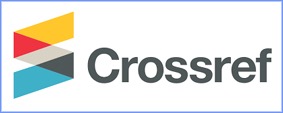Variasi Bahasa Kaum Milenial: Bentuk Akronim dan Palindrom dalam Media Sosial
DOI:
https://doi.org/10.29240/estetik.v3i1.1470Keywords:
modern era vocabulary, form of language, meaning in languageAbstract
Downloads
References
Bahing dkk. (2018). English Speech Acts of Illocutionary Force in Class Interaction. Advances in Language and Literary Studies. https://doi.org/10.7575/aiac.alls.v.9n.3p.113
Bahtiar, A. N. S. H. (2019). Khazanah Bahasa: Memaknai Bahasa Indonesia dengan Baik dan Benar (1st ed.). Bogor: In Media. Retrieved from http://penerbitinmedia.co.id/search/?q=khazanah bahasa.
Eduardus Swandy. (2017). Bahasa Gaul Remaja dalam Media Sosial. Jurnal Bastra.
Gumgum, G., Justito, A., & Nunik, M. (2017). Literasi Media: Cerdas Menggunakan Media Sosial Dalam Menanggulangi Berita Palsu (Hoax) Oleh Siswa Sma. Pengabdian Kepada Masyarakat. https://doi.org/1410 - 5675
Hudaa, S. (2018). Optimalisasi Bahasa: Penggunaan Bahasa yang Baik, Logis, dan Santun di Media Massa. Dialektika: Jurnal Bahasa, Sastra, dan Pendidikan Bahasa dan Sastra Indonesia. https://doi.org/10.15408/dialektika.v5i1.5953
Joseph, C. A. B. (2005). Language in contact and literatures in conflict: Text, context, and pedagogy. World Englishes. https://doi.org/10.1111/j.1467-971X.2005.00398.x
Ningsih, S. A., Rasyid, Y., & Muliastuti, L. (2018). Analisis Kebutuhan Materi Ajar Membaca BIPA A1 dengan Pendekatan Deduktif di SD D’Royal Moroco. PEMBELAJAR: Jurnal Ilmu Pendidikan, Keguruan, Dan Pembelajaran. https://doi.org/10.26858/pembelajar.v2i2.5974
Putri, N. P. (2017). Eksistensi Bahasa Indonesia Pada Generasi Millennial. Widyabastra.
Rahardi, R. K. (2018). Konstelasi Kefatisan dalam Teks-teks Natural Religius dengan Latar Belakang Kultur Spesifik. In Prosiding Kongres Internasional Masyarakat Linguistik Indonesia 2018 (pp. 274–279). Manokwari, Papua Barat: MLI.
Rahayu, A. P. (2015). Menumbuhkan Bahasa Indonesia Yang Baik dan Benar Dalam Pendidikan dan Pengajaran. Jurnal Paradigma.
Riyanto, B. (2019). Media Sosial dan Multikulturalisme di kalangan Pemuda Surakarta. ETTISAL : Journal of Communication, 4(1), 3. https://doi.org/10.21111/ettisal.v4i1.3070
Saddhono, K., & Putu Wijana, I. D. (2011). Wacana Khotbah Jumat di Surakarta: Suatu Kajian Linguistik Kultural. Jurnal Pendidikan dan Kebudayaan, 17(4), 433. https://doi.org/10.24832/jpnk.v17i4.39
Setyawati, N. (2016). Pemakaian Bahasa Gaul dalam Komunikasi di Jejaring Sosial. Pemakaian Bahasa Gaul Dalam Komunikasi Di Jejaring Sosial.
Tinarbuko, S. (2009). Semiotika Komunikasi Visual. Yogyakarta: Jalasutra.
Wahyudi, A. B. (2014). Metode Penelitian Kebahasaan. Jurnal Bahtera.
Yundayani, A. dkk. (2018). Need Analysis: The Writing Skill Instructional Material Context for Academic Purposes. English Review: Journal of English Education. https://doi.org/10.25134/erjee.v6i1.771
Downloads
Published
How to Cite
Issue
Section
Citation Check
License
Copyright (c) 2020 Syihaabul Hudaa, Ahmad Bahtiar

This work is licensed under a Creative Commons Attribution-NonCommercial-ShareAlike 4.0 International License.
Authors who publish with ESTETIK : Jurnal Bahasa Indonesia agree to the following terms:
- Authors retain copyright and grant the journal right of first publication with the work simultaneously licensed under a Creative Commons Attribution-NonCommercial-ShareAlike 4.0 International License (CC BY-NC-SA 4.0) that allows others to share the work with an acknowledgment of the work's authorship and initial publication in this journal.
- Authors are able to enter into separate, additional contractual arrangements for the non-exclusive distribution of the journal's published version of the work (e.g., post it to an institutional repository or publish it in a book), with an acknowledgment of its initial publication in this journal.
- Authors are permitted and encouraged to post their work online (e.g., in institutional repositories or on their website) prior to and during the submission process, as it can lead to productive exchanges, as well as earlier and greater citation of published work (See The Effect of Open Access).







